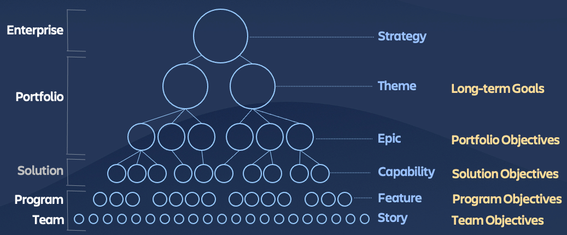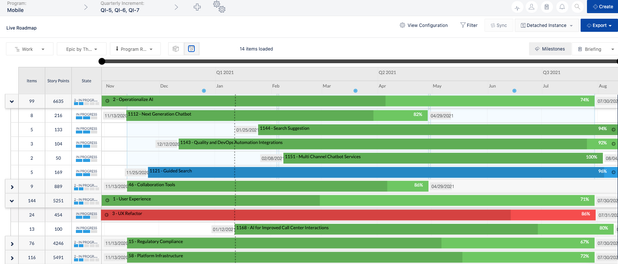Community resources
Community resources
Community resources
- Community
- Q&A
- Jira Align
- Articles
- Do you use Objectives or Themes? Why not both?
Do you use Objectives or Themes? Why not both?
There are several key distinctions between Objectives and Themes in Align, and people ask “Should I use an objective or a theme?” As we say in our house, why not both?
In Align, Objectives and Themes serve different purposes, and they may have different audiences, be reviewed on different cadences, and inform different decisions within your organization. There are two important distinctions between Objectives and Themes:
- Objectives represent a description of the desired outcomes your organization wants to achieve; long-term objectives can be decomposed into shorter-term objectives that help you track whether you're getting the results you want.
- Themes represent a decomposition of work your organization might do, from a very high-level item that could take several parts of your organization multiple years to complete all the way down to the stories that are completed by a team in a sprint.
These two objects give you a way to track both Outcomes and Outputs.
In Align's People/Work/Objectives/Time structure, you can see how objectives and outcomes are lined up in the picture below:
Here's a brief list of the distinctions between the Objective and Theme hierarchy.
Objectives
- Goals and objectives are intended to define the outcomes the enterprise is seeking with its different investment decisions.
- Goals and objectives can be arranged in a hierarchy where a high-level goal can be achieved by different portfolios achieving specific objectives; portfolio objectives can be decomposed into solution, program, and team objectives.
- Team or program objectives may not necessarily be related to a higher-level objective. It is possible (even desirable) for a team to have local objectives that are roughly aligned with enterprise objectives.
- Goals can be achieved over one or many years. (This depends on how the Strategic Pyramid is configured for your enterprise.) Usually a goal is achieved over a year. Objectives are related to quarters: a portfolio objective may be achieved over many quarters, but a program objective is expected to be completed in a single quarter.
- Objectives can be achieved by one to many work items being completed. Work objects (epics, capabilities, features) may contribute to multiple objectives.
You can view the Objectives Tree to see how you're doing with achieving your desired outcomes (or Key Results, if you're using OKRs.) This view is from release 10.85.
(There are other ways to look at how well you're doing at reaching your desired outcomes, but this is one of the best views.)
Themes
- Themes are intended to be used to track work that is being done to meet the enterprise’s strategic goals.
- Themes sit on top of the Work Tree and represent the transition from strategic intent (goals in a strategic snapshot) into portfolio-specific investment opportunities (i.e, initiatives.)
- Themes are large efforts for the enterprise, and may take from 4 to 8 quarters to complete.
- Themes have target budgets that can be used for managing investment guardrails. Theme owners can set a total budget they want to spend on the specific theme, then see how different teams or programs are allocating their work compared to those budget guardrails.
- Themes represent the highest level of the work decomposition structure. Themes are made up of epics, which are made up of features, then stories. A subordinate work object can have only one superior or parent work object (i.e, an epic can belong to only one theme.)
Here's a view of the Roadmap, showing the progress of the epics that are connected to the Themes your program is working on.
(There are other ways to look at the progress of the work being done to deliver on big themes, but this Roadmap view is a common starting point for digging in.)
Was this helpful?
Thanks!
Rich Sparks

About this author
Enterprise Agility Strategist
Atlassian
43 accepted answers



1 comment